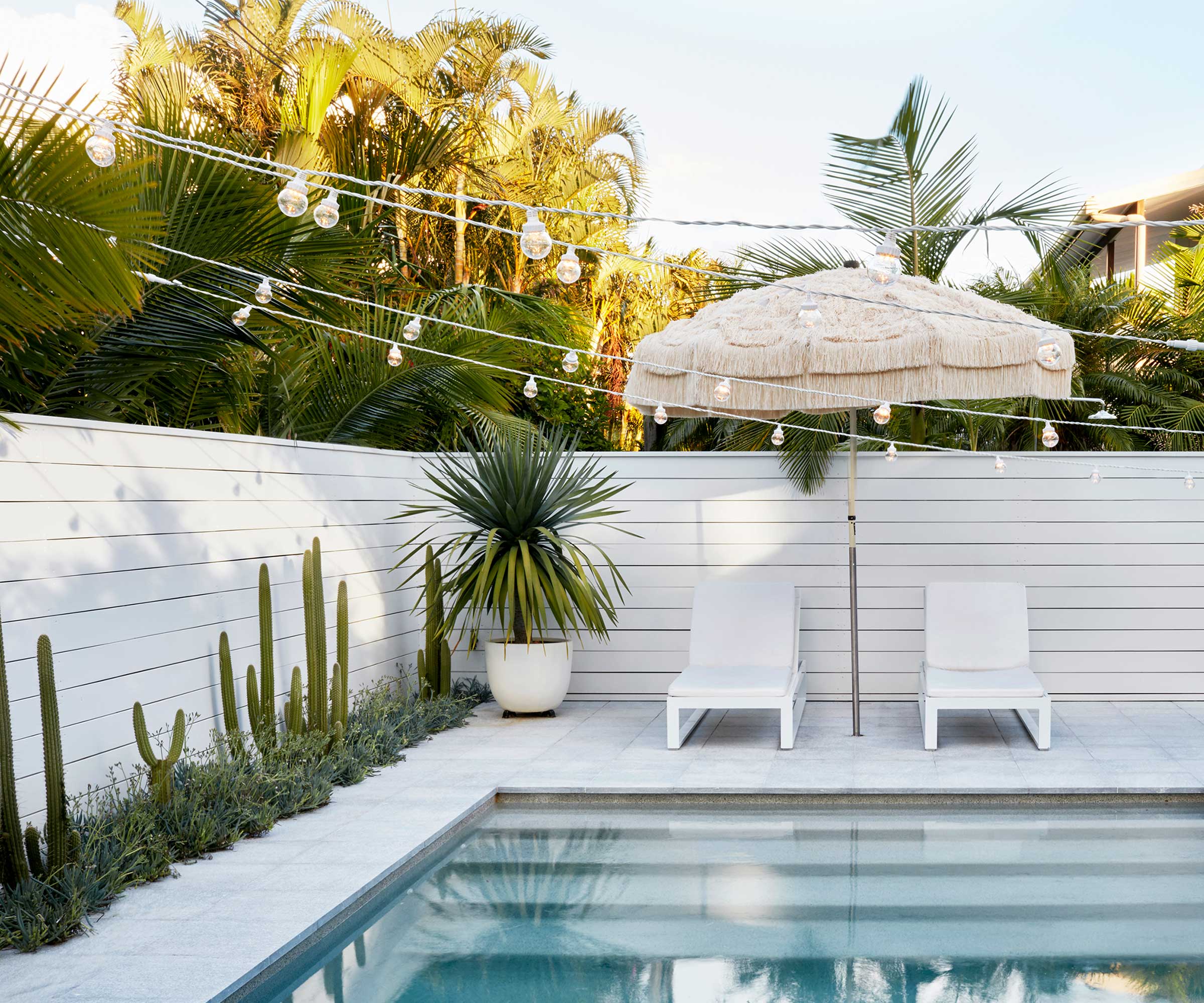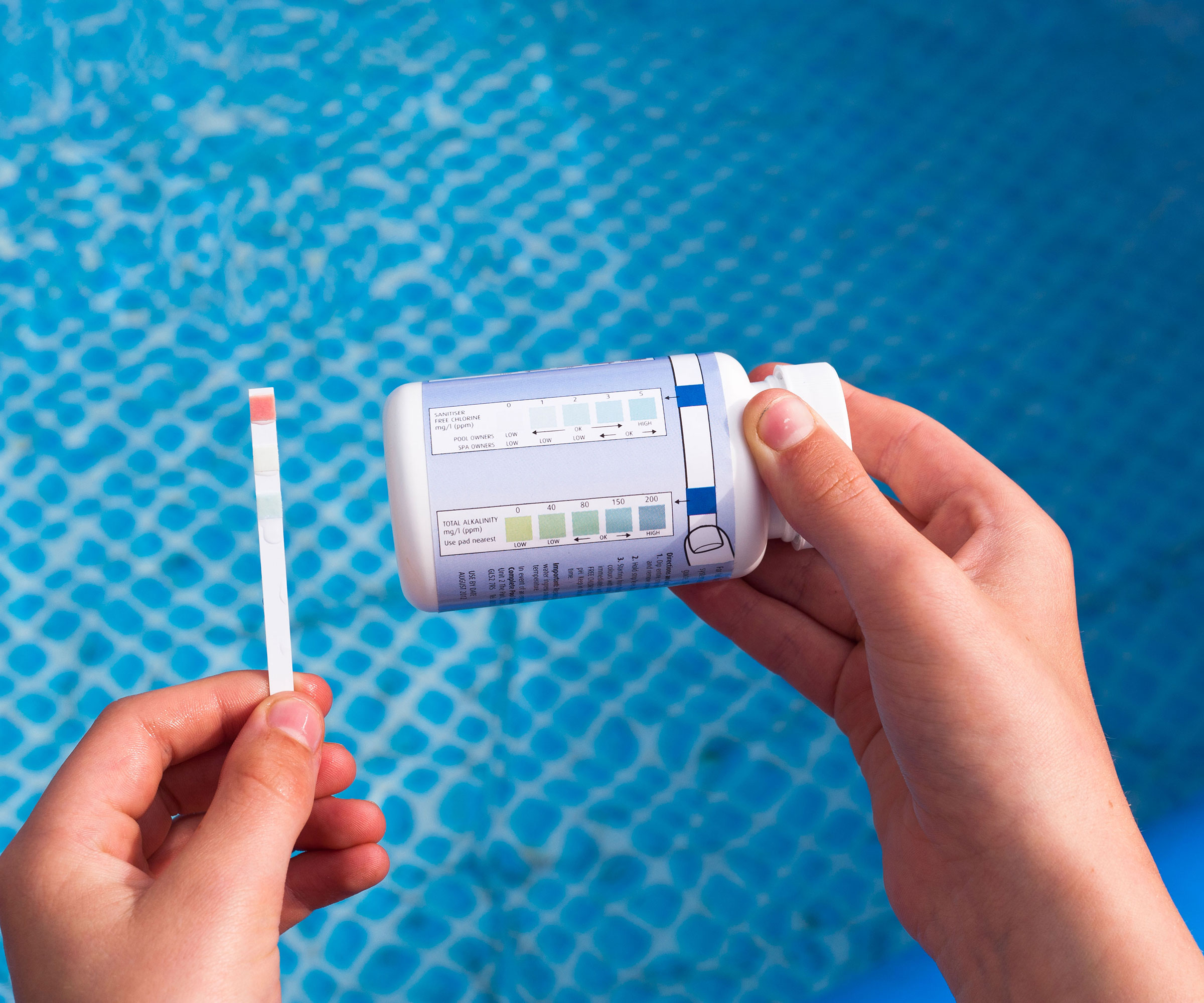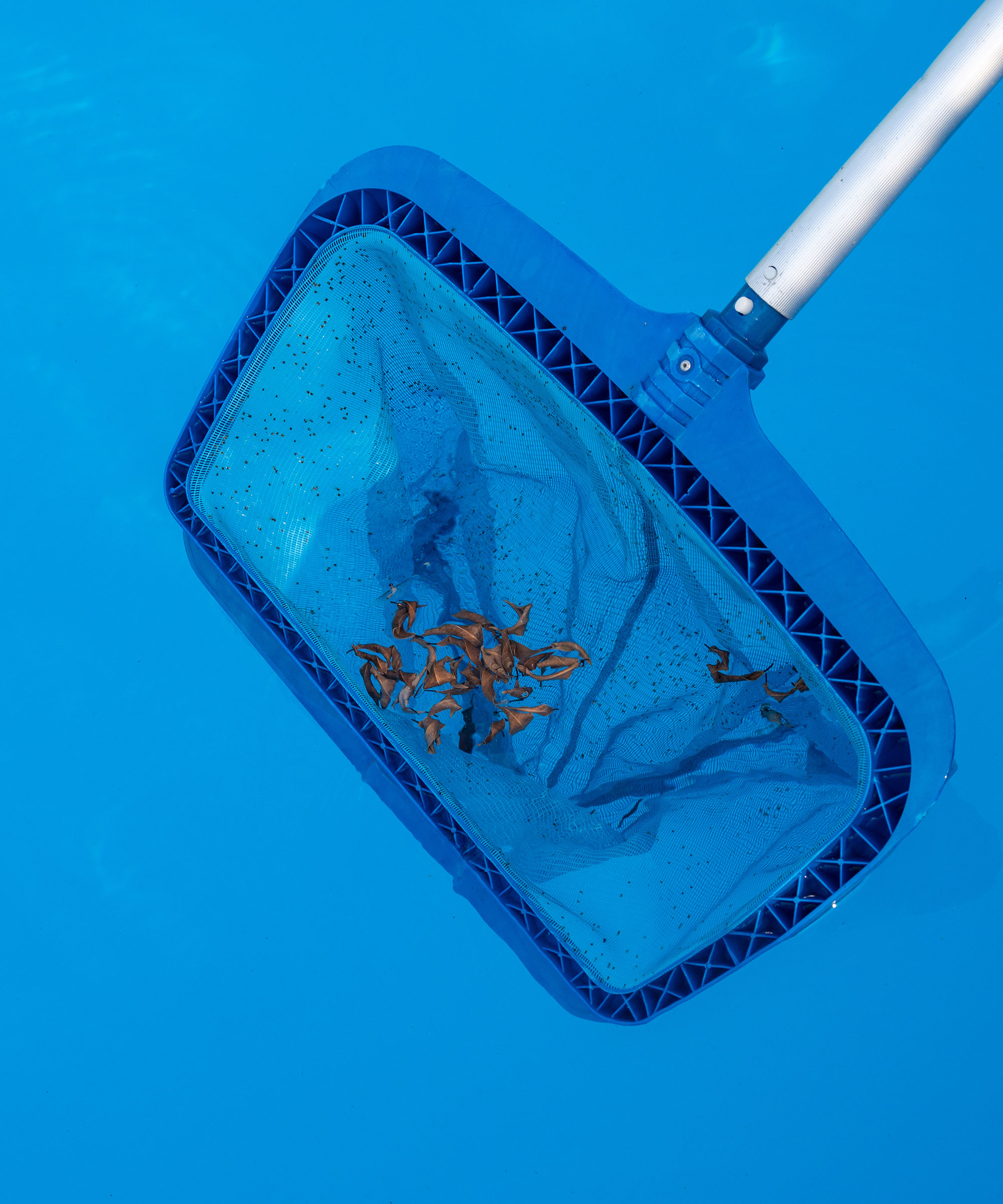How to fix a cloudy pool – 5 methods a pool expert say will make the water inviting and clean again in no time
Discover these simple and speedy methods for clearing cloudy pool water


Cloudy pool water is an issue that you’re going to want to fix in a hurry. No one wants to swim in water that’s showing evidence of contaminants or contains debris or algae. A cloudy pool is an eyesore, too, compromising the appeal of the backyard.
There are some common reasons why pool water can become cloudy, but these are issues you can tackle yourself to make water healthy as well as inviting once again. What’s more, it needn’t take long to solve these problems and make the most of your pool ideas once again.
Our expert guide has the details on what can make pool water cloudy, and how to fix whichever problem you’ve encountered, so that family and friends can get back into the water.

Keeping on top of pool maintenance is essential to ensure the water remains clear and clean for swimming
How to turn pool water from cloudy to clear
Cloudy water is a sign that all is not well with the water in a pool, and fixing this is essential to create healthy water for swimming, relaxing and playing in and that’s the inviting centerpiece of pool landscaping ideas.
Typically, cloudy pool water is the result of issues such as the wrong chlorine levels, improper water chemistry, a filtration problem, or contaminants.
Here are the five ways to identify what’s gone wrong with the water in your pool and fix the cloudiness quickly.
1. Remedy low chlorine levels

Low chlorine levels might be the cause of a cloudy pool. ‘There are several reasons that chlorine levels might drop in a residential pool,’ explains Corey Coughenour, director of operations, Anthony & Sylvan Pools.
Design expertise in your inbox – from inspiring decorating ideas and beautiful celebrity homes to practical gardening advice and shopping round-ups.
‘The most common cause of a cloudy pool is the presence of organic materials in the water. This includes leaves, branches, and dirt. Certain substances like rainwater dilute the amount of existing chlorine in a pool which helps keep it clear. The excessive presence of substances like sunscreen and soaps, which are easily deposited into pools by swimmers, can also contribute to dropping chlorine levels.
‘Another factor that impacts a pool’s clarity is exposure to UV rays from sunlight. Bright UV rays turn chlorine particles into gas and release them into the atmosphere, lowering chlorine levels. On a bright, sunny day, a pool can lose almost all its chlorine due to the UV rays.
‘Chemical imbalances within the pool can also cause chlorine levels to drop,’ Corey notes. ‘Anthony & Sylvan service experts recommend ensuring that the pH, total alkalinity, and calcium hardness levels of the pool are within the proper ranges.’ See more on these below.
‘When the chlorine levels drop, pools become more susceptible to contamination by materials including metals, algae, and bacteria,’ adds Corey. ‘The accumulation of these substances results not only in a cloudy pool, but one that is unsafe for swimming.’
You’ll need to assess what is called the free chlorine level since this is the chlorine that sanitizes the water in the pool. The level of free chlorine should be at least 1 part per million (ppm), and ideally in a range between 2 and 4 ppm.
If free chlorine is low, then there isn’t enough chlorine in the pool for sanitization and chloramines, a type of combined chlorine where chlorine combines with contaminants, can turn the water cloudy. Chloramines are also irritating to both skin and eyes and they smell strongly of chlorine, and it’s vital not to let levels get too high.
Use a test kit that will read the level of free chlorine and total chlorine in the pool. To discover the level of chloramines in the pool subtract the level of free chlorine from the level of total chlorine. If the chloramine level is 0.5 ppm or over, chloramines need to be removed from the pool. A level of 0 ppm is ideal. These JNW pool test strips from Amazon will give help you take chlorine level readings, or this 3-in-1 pool test kit, also from Amazon, will test the total chlorine, total bromine and pH levels.
Discovered the chloramine level is too high? The answer is to use pool shock to reduce them and increase free chlorine levels and sanitize the water. We recommend this best-selling HTH advanced treatment pool shock, available from Amazon.
2. Address poor pool chemistry

Check the chlorine and PH levels on a regular basis
Pool chemistry is crucial to keep the water clear and sanitary. If the pH is too high, or the total alkalinity or the calcium hardness, then water that’s cloudy can be the result.
‘The pH, total alkalinity, and calcium hardness levels all play a role in avoiding cloudy pool water,’ explains Anthony & Sylvan’s Corey Coughenour. ‘It is crucial that these levels stay within the optimal ranges to prevent cloudy water. If the pH of the water is too low, it can cause the corrosion of metal particles in the water system which results in cloudy water due to the metals in the pool. If the pH is too high, it will cause scale deposits to form and cloud the water. Pool pH levels should stay between 7 and 7.6 to avoid cloudy water.
‘Similarly, the total alkalinity helps to prevent sudden pH changes. If it is too low, the water becomes prone to an imbalanced pH level. If it is too high, it can lead to the formation of scale deposits. The total alkalinity level should be between 80 and 120 ppm (parts per million) to prevent cloudy water.
‘The calcium hardness measures the level of calcium ions in the water. High levels of calcium hardness can cause scale deposits and result in cloudy water. The calcium hardness level should ideally be between 200 and 400 ppm. These factors must stay balanced and within the optimal levels to prevent cloudy water.’
You may be able to take advantage of in-store chemical testing at a pool retail store, or you can use a test kit to check the pool chemistry. Once you’ve tested, balance levels if required to bring them into recommended ranges, adjusting the alkalinity before the pH.
3. Troubleshoot pool filtration issues

A fully functioning pool filter is key to removing everything from general dirt to pollen from your pool.
If pool filtration isn’t adequate, then the water can become cloudy. Check the filter for any build-up or blockages, and clean it regularly following manufacturer’s instructions. The filter itself should also be replaced according to the recommended schedule. An older pool filter system can need replacement parts in time.
Be sure, too if the water is cloudy, that you’re running the filter long enough each day. Depending on how much the pool is used, figure on running it from at least eight to 12 hours a day.
4. Deal with contaminants

Regularly skimming your pool will keep it free of debris
There are a whole host of things in your pool area or from your pool deck that can contaminate a pool and result in cloudy water that needs attention. Debris can cause a build-up in the filter that results in cloudy water, and the measures detailed above should be employed to tackle this. And run-off water can also introduce contaminants to the swimming pool that cause cloudy water.
A pool net, such as this heavy-duty ProTuff mesh pool skimmer net from Amazon, will enable you to get rid of larger debris that finds its way into the pool that can bring cloudiness in its wake. The early stages of green algae growth can also be a culprit, so clean and shock the pool to get rid of it.
To deal with the consequences of run-off test the pool water and balance it as necessary after a rainstorm as well as cleaning out debris.
5. Use a pool clarifier or flocculant

If you’ve dealt with the issues that make a pool cloudy and it has the right chlorine level, the pool chemistry is correct, the filter system is running effectively and algae growth has been stopped in its early stages but the water is still cloudy, there may be particles in the pool.
To deal with these you can use a pool clarifier or a pool flocculant. The former collects them so your pool filter system can pick them up, and will take around two to three days.
A pool flocculant, on the other hand, clumps particles together at the bottom of the pool so they can be vacuumed up. This is a quicker process, but you’ll be doing the cleaning up. Follow manufacturer’s instructions whichever product you use.
FAQs
Is it OK to swim in a cloudy pool?
No, it isn’t OK to swim in a cloudy pool. ‘Cloudy pool water is not safe to swim in,’ says Corey Coughenour, director of operations at Anthony & Sylvan Pools. ‘It brings potential dangers to swimmers including the possibility of hazardous bacterial growth.
‘Cloudy water is usually a result of contaminants or imbalanced chemical levels which make the pool unsafe for use. As a result, swimmers may experience skin irritation, eye irritation, and even respiratory issues if unsafe materials are inhaled or ingested.
'In addition, cloudy water makes it more difficult to see swimmers underwater, especially smaller children and therefore poses a safety risk. Poor visibility underwater increases the risk for collisions which can lead to injuries. As a benchmark, if the bottom of a pool is not visible, it is not safe to swim in.’
Why is my pool still cloudy after I've shocked it?
There are several reasons why a pool might still be cloudy after using pool shock. The first being you haven't waited long enough. It can take up for three days for pool shock to do its job. It could also be owing to high calcium levels in the water. Be sure to keep the calcium hardness level between 200 and 400 parts per million for clear water.
If your water has a high pH level, over 7.8, it will become alkaline and may interfere with the pool shock treatment. Or if the cyanuric acid level in the water is too high, this can also cause pool shock to be much less effective. It might also be because you have an issue with water filtration, or some contaminants remain in the water - which could happen after high levels of use, for example.
How long should it take to clear a cloudy pool?
A cloudy pool can be cleared quite quickly. ‘It usually takes between two to three days to clear a cloudy pool,’ advises Corey Coughenour.
‘However, it depends on the cause of the cloudy water. It is recommended to check both the pump and filter, allowing them to run for at least eight hours a day during swimming season. Additionally, regularly using a clarifier can help offset environmental factors that contribute to cloudy water, such as the presence of organic materials in the pool.'
‘Pool water should be tested two to three times a week to ensure that its chemical composition is balanced,' advises Corey Coughenour.
'Taking these steps proactively can ensure that pool water stays balanced and safe for recreational use throughout the swimming season. And, if the cloudy water is more than you can handle alone, we recommend reaching out to a professional to help you.’
If you also have a hot tub in your backyard, you should take a similar approach to cleaning and maintaining it.

Sarah is a freelance journalist and editor. Previously executive editor of Ideal Home, she’s specialized in interiors, property and gardens for over 20 years, and covers interior design, house design, gardens, and cleaning and organizing a home for Homes & Gardens. She’s written for websites, including Houzz, Channel 4’s flagship website, 4Homes, and Future’s T3; national newspapers, including The Guardian; and magazines including Future’s Country Homes & Interiors, Homebuilding & Renovating, Period Living, and Style at Home, as well as House Beautiful, Good Homes, Grand Designs, Homes & Antiques, LandLove and The English Home among others. It’s no big surprise that she likes to put what she writes about into practice, and is a serial house renovator.